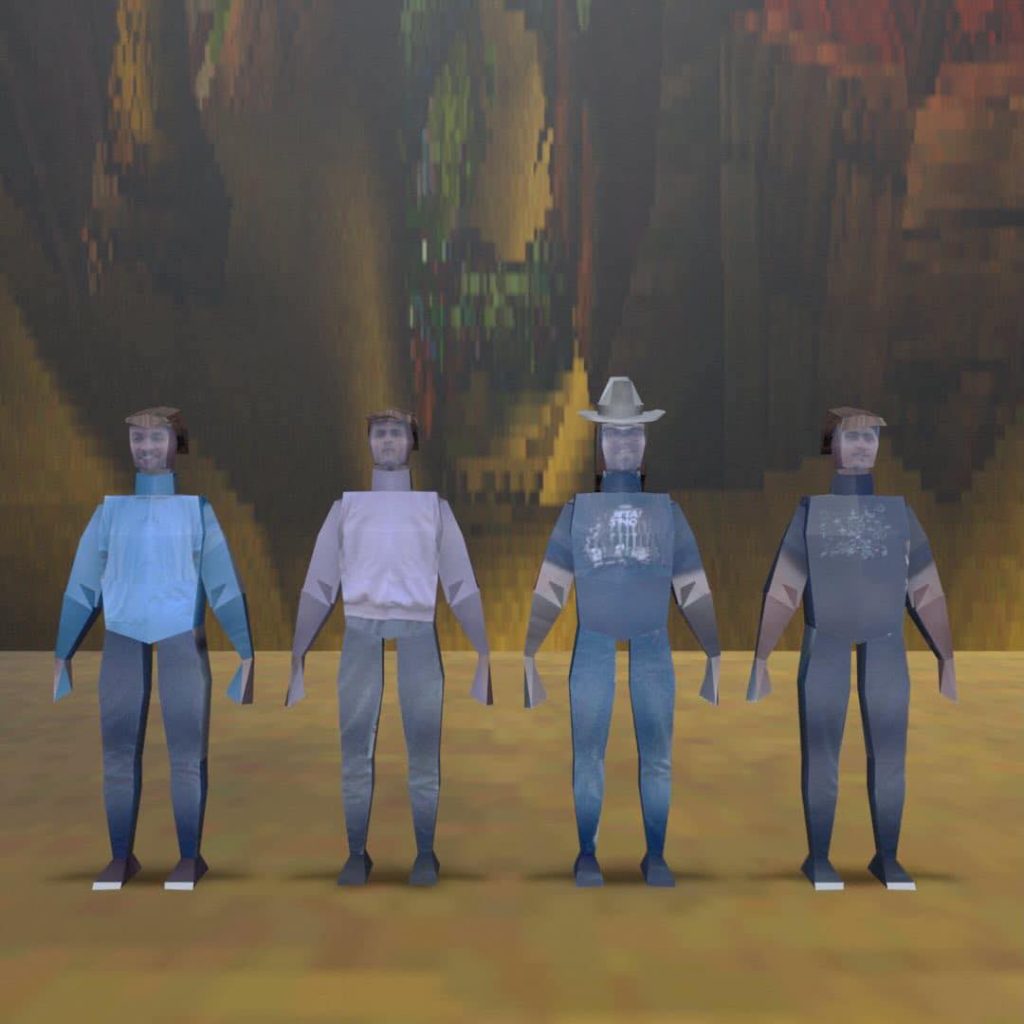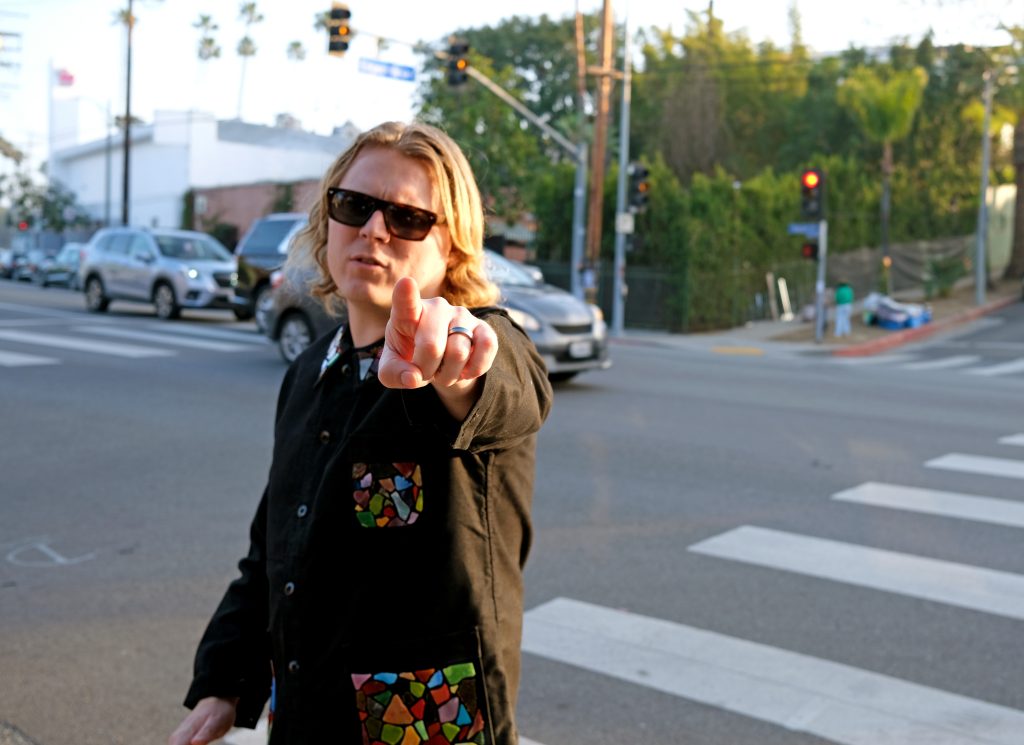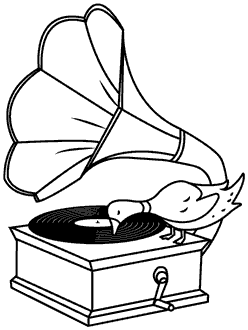
Ty Segall follows 2022’s acoustic introspection opus “Hello, Hi” with a deeper, wilder journey to the center of the self. With Three Bells, he’s created a set of his most ambitious, elastic songs, using his musical vocabulary with ever-increasing sophistication. It’s an obsessive quest for an expression that answers back to the riptide always pulling him subconsciously into the depths. Questions we all ask in our own private mirrors are faced down here—and regardless of what the mysterious “Three Bells” mean in the context of the album’s libretto, you can be assured that Ty’s ringing them for himself, and for the rest of us in turn. It’s a growing up and out of your head parable, but the farther out you get, the farther in you go. The two-headed suggestion of 2012’s Twins has grown ever more complex, as the outside/inside world of perception dissolves into a greater world of the senses—all six or seven of them! Since Ty deals in sounds, Three Bells rings with them most of all: sounds signaling the next phase, ringing to keep you stuck, or to set you free, with guitars like voices, questioning and answering the others in their turn. Since 2008, the singer/guitarist/puzzled panther we call Ty Segall has played out his hunger to be free over a dozen solo LPs and a series of other-named projects. In his music, freedom has taken the form of a rippling eclecticism in songs and production sounds, all of them conversing from album to album in a mad diversity of voices. Across the discograverse, 2014’s Manipulator and 2018’s Freedom’s Goblin precede Three Bells in double-album epicity, each unfurling its own multivarious tapestry in an atmosphere of gleeful octophenia, as Ty throws everything against the wall, delighting in how much he can stick there. With all fifteen songs brimming with perspectives, shape-shifting incessantly, not even waiting for a new song to work into the next idea, Three Bells steps into the shoes of both his previous doubles at the same time, designing finally to do the extended format justice. The acoustic songs of “Hello, Hi” had been a blast of fresh air; wanting another hit of that sweet air, Ty recognized that his body was craving to play the drums. This was a key that let him into the album— the songwriting happening on both guitar and drums. As the songs emerged, Ty pushed them out farther and farther compositionally, challenging the way they’d be played, then playing much of Three Bells in conversation with himself—a decision that further elevates the album’s conception. But you don’t get outside/inside all on your own—for Three Bells, Ty and Denée Segall collaborated on five of the songs. In Ty’s world, Denée forms the second self outside his self. And these selves radiate out into the world through other selves. Co-producer Cooper Crain, whose contributions to Harmonizer and “Hello, Hi” were deep, engineered and mixed most of the album, again bringing his individual vision into the process. Finally, some of the songs as written needed the kind of playing that Ty couldn’t get alone. On some numbers, Emmett Kelly’s bass parts not only addressed that need, but inspired the way the songs eventually went down. So it was when the Freedom Band was called in to play; their contributions transformed the material. Three Bells kind of goes beyond songs. The fifteen of them work together as a mosaic, creating the larger work at the same time as they stand on their own. Composing the album as a piece, Ty formed certain chord shapes over and over again, making thematic material that each song moves through in its own way, building a claustrophobic/paranoia vibe, cycling bold thrusts forward into ego deaths, the one-step-forward, two steps- back patterns framing an overriding ask: what we can do to get past the back-and-forth conversation, to arrive at a place of acceptance. Three Bells takes Ty Segall’s trips so much deeper and farther than they’ve gone before—a masterpiece of personal expression, expressed through words, music and production, parabolically addressing malaise with compassion in a flowing, unstoppable hour-plus of intoxicating sound.
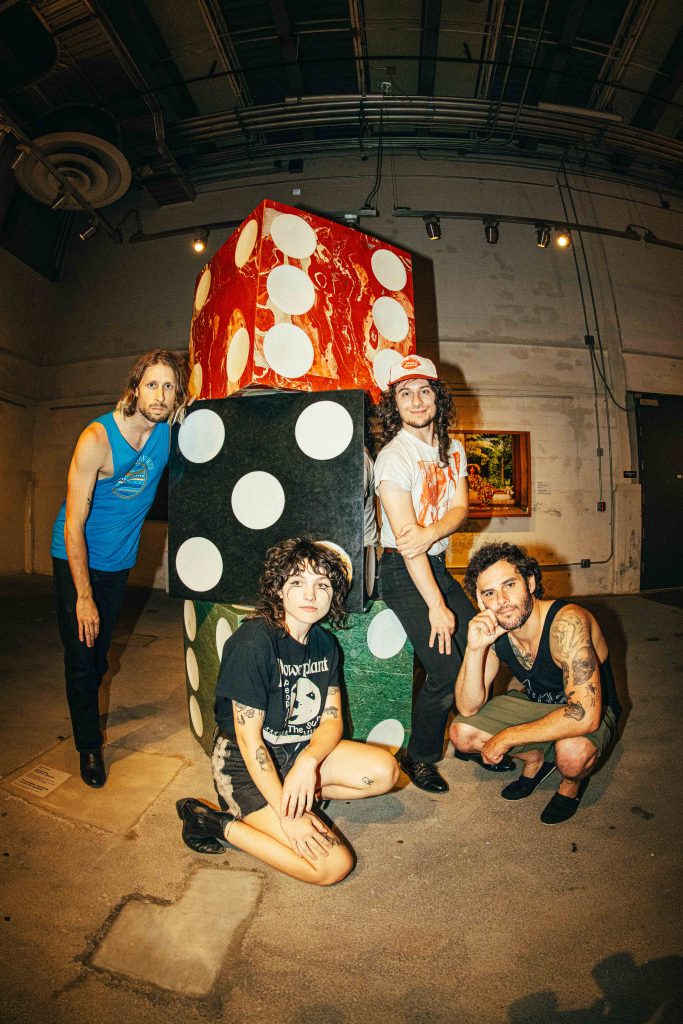
Spoon Benders
Spoon Benders is a progressive psych-rock powerhouse that has been relentlessly crisscrossing the United States, leaving a trail of newly acquired fans in their wake. Spoon Benders have become synonymous with an electrifying stage presence that can only be described as loud, controlled chaos.
Spoon Benders have been carving their path through the musical landscape since their inception, and are now consistently supporting notable acts such as Frankie and The Witch Fingers, L7, Fuzz, Meatbodies, Deap Vally, Death Valley Girls, and The Paranoyds.
In April of this year, Spoon Benders unleashed their sophomore album, “How Things Repeat,” upon the eager ears of the public. The album is a testament to the band’s artistic evolution and ability to push the boundaries of their sound. “How Things Repeat” has been met with resounding acclaim, cementing Spoon Benders’ status as a force to be reckoned with in the psychedelic rock landscape.
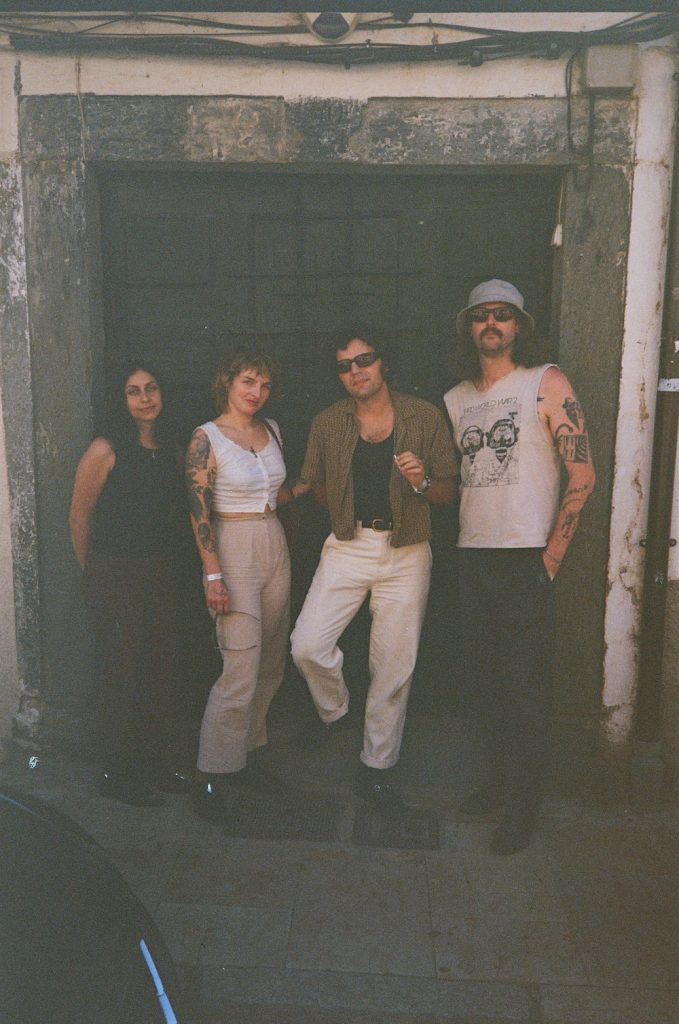
Color Green
For the California-based quartet Color Green, playing music together is all about stepping into the unknown. “When we play live, I don’t really know what’s going to happen,” says Noah Kohll, one of the band’s two guitarists and four vocalists. “You really have no idea what you’re going to get with this band, which keeps things fresh for us and maybe makes the live experience special.” In a very short time, they have developed a word-of-mouth reputation as a dynamic and unpredictable live act, grounding their cosmic jams in earthy melodies and drawing from ‘60s SoCal folk-r0ck, ‘70s classic rock, ‘80s underground rock, ‘90s psychedelic dance-rock, and any other sound that catches their ears. Adaptable onstage and off, Color Green has shared stages with a range of groups that reflect both the sophistication and the wild malleability of their sound, including Fuzz, Kikagaku Moyo, Circles Around the Sun, Hiss Golden Messenger, and the Brian Jonestown Massacre. Yet, because they see boundless possibilities from one note to the next, they anchor their music in the urgent present rather than the distant past. Color Green can be a million different bands without losing their essential hue. They capture that wild, mercurial quality on Fool’s Parade, a meditation on loss, grief, confusion, frustration, and the clarity to which they all lead. The album has the dynamic of a tight live set, full of ebbs and flows, highs and lows, quiet moments like the devastating “5:08” and reckless jams like the epic “Kick the Bucket.” “Four Leaf Clover” bustles and shimmies like the kaleidoscopic dance rock of the Stone Roses, while closer “Hazel Eyes” recalls the elaborate orchestrations of Brian Wilson and the whimsical melodies of Buddy Holly. “We shaped it to showcase our range,” says guitarist Corey Madden. “All the songs were written together as a band. It’s the four of us in a room, and it features all of our voices. It’s one step toward what this band truly is. We spent a lot of time getting our shit together as a band, and now it’s set in stone for me.” Color Green started out as a very different, much more limited kind of group. “Me and Corey worked together in New York scooping coffee beans for a living and putting them into bags,” says Kohll. “I was living in a basement sublet, and he would come over to write and jam and record.” From those casual sessions came a self-titled EP in 2021, full of spectral jams and offerings up to Jerry Garcia, their spiritual guide. The next year they followed it up with a self-titled full-length via Aquarium Drunkard, with various friends helping to round out the songs. “These things happen in an interesting way,” says Kohll. “There’s been a lot of weird synchronization with this band. It’s all very organic. After we put out our first album, we thought, Oh, this needs to be a live band, too.” After running through a few different rhythm sections, they met drummer Corey Rose and bassist Kyla Perlmutter, who not only are kickass players but opened up all new possibilities within Color Green. “Our first practice together, everyone was like, This is so loud,” says Rose. “That became a really important part of the band, and we try to capture that dynamic when we record.” Perlmutter adds, “We all really value each other’s input. It doesn’t feel like there’s an unfair hierarchy in this band. We respect each other’s tastes and recognize that we’re all very, very much in love with music in our own ways.” After sharpening their attack on the road—playing DIY shows in small towns while opening for some of their heroes—the expanded Color Green began writing songs for what they considered a debut album. “One of us will come in with a riff or an idea, and the others will take it up and let it morph into something completely different,” says Perlmutter. “What we come up with together, I don’t think any of us could do by ourselves. The music we make is always surprising me.” The album’s title track, with its snaking guitar lines and parallax instrumental interplay, started out as an eastern jam when Rose came in with a very loose idea: “I wanted to write something in 6/8 time,” she says. “It was super awkward at first, but 40 minutes later, it sounded like Fairport Convention. It took everybody to get there.” Says Madden, “I like when stuff happens and it opens up the door to something else in my brain. We might spend a lot of time working on something and get nothing out of it, but then in the back of my head I’m thinking, if you take this and add it to that… Sometimes it takes hours to figure out two seconds of a song, but it’s always worth it.” The aching heart of Fool’s Parade is “5:08,” a moving expression of grief—not moving through it, necessarily, but simply living with it, moment to moment. “What’s it like, on the other side?” they all sing together, as though consoling one another. “Oh, the longing for the space to peer thru.” Inspired by the death of Madden’s father, it is rooted in a Spiritualized show. “I was going through some gnarly personal stuff,” says Madden, “and it was all hitting me at once, all these emotions. I talked my way through some crazy shit, and by the end of the show I had ‘508’ hashed out in my brain. It’s about losing people very close to you and wanting to communicate with them and not really knowing how.”“It’s the quietest song on the record,” says Rose, “but it’s also the heaviest. We all cried while recording it. Everybody’s singing on it, and everybody’s crying on it. Sometimes we’re like, Let’s not play that song tonight. It all depends on how we’re feeling.”
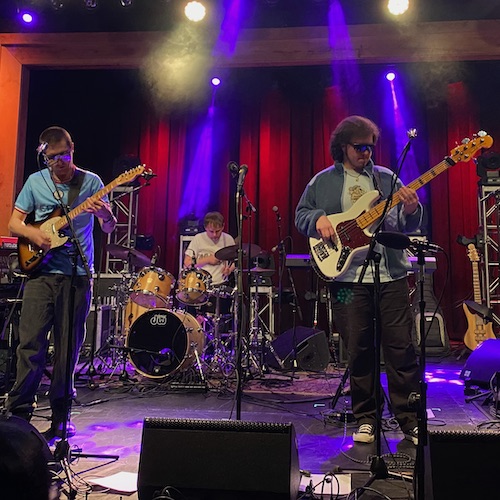
Telula
Followed by more than 250,000 fans around the world, their music and videos streamed and viewed by millions, Telula’s shared love of funk is evident in their music. They take inspiration from greats such as Stevie Wonder and modern masters like Vulfpeck, while incorporating their own pop and jazz influences with contemporary twists. Their music is soulful and dynamic, showcasing intricate melodies backed by funky rhythms. Telula’s combination of technical proficiency and artistic expression creates a sound that is both inspiring and energizing. Telula was formed when Lucas Aney and Thomas Jensen met in their first days of college in 2021 and found common ground in their passion for funk music. Over the following year, they built the band and spent countless hours learning how to professionally record, produce, and release music – all out of their dorm. Their dedication and hard work paid off in the creation of a nine-song album, each track showcasing their unique sound and individual proficiency on bass and guitar. Telula released their first album at the early age of 19 and a five-song EP one year later in 2023. Headline and support shows followed late in the year, and in 2024 the band will be featured at major festivals in New York, Texas and Idaho and regional venues around the Northeast US.
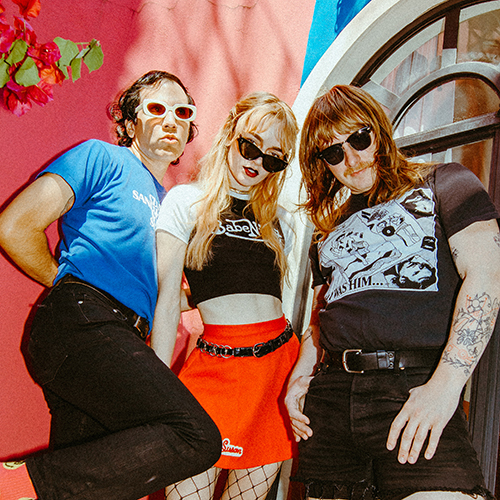
Biblioteka
Fronted by singer/bassist Mary Robins, Biblioteka seamlessly blends elements of punk, grunge, and garage to craft irresistibly catchy and high-energy rock. Known for their dynamic stage presence, the band has established a reputation for delivering boisterous shows that leave a lasting impression. In 2022, Biblioteka unveiled their debut LP, “Pretty Ugly,” through Seattle’s Freakout Records. Lauded by KEXP for being fiercely personal while not sacrificing the band’s penchant for big melodies, the album showcases Biblioteka’s distinct and captivating musical style. In Fall of 2023, Biblioteka led on their first international tour to Mexico and New York, along with performing their first live KEXP In-Studio session. Biblioteka is currently recording their next full-length record.
